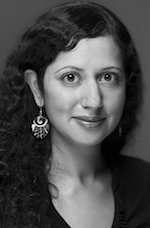I’ve never been good at math, but there’s one calculation at which I excel. It goes like this: Age of one of my favorite journalists, minus my own age, equals self-loathing.
How old was Sarah Koenig when “Serial” came out? How old was Susan Orlean when she wrote “The Orchid Thief”? How many times did Susan Orlean get rejected from The New Yorker before she got a job there? Is it comparable to the number of times I’ve been rejected from The New Yorker? (Two.)
Last spring, I began to notice a pattern: Whenever I skimmed a journalist’s bio — usually on my way to work at a big, fancy magazine publisher — I read a lot about achievements, and almost nothing about all the work it took to achieve them. It makes sense. Who wants to read about all the less-impressive jobs someone did early in her career?
I realized I did.
Curious about the little-known jobs my favorite women writers, editors, and journalists held, I set out to interview them about the time between their first gigs and the ones where they felt like they “made” it. I wanted to make something that inspired younger women like me to keep going, that gave us a road map for navigating jobs in our 20s.
Because it was 2017 and everyone had a podcast, I made one, too. I named it “Life TK” (TK being the editing mark that means “to come”), and I talked to Linda Ellerbee, Emily Gould, Vanessa Grigoriadis, and Leigh Stein about their biggest challenges, triumphs, and failures in their 20s. It was going really well.
And then I got laid off. And then I got serious.
Pre-layoff, I wanted the career advice of women smarter and more successful than me because it was an interesting project. Post-layoff, “Life TK” became more meaningful, a search for connection to women in my field. Below is a roundup of some of the smartest insights from six of the most generous women I’ve been lucky enough to interview. These are the stories that have inspired me to persist, to lift as I climb. This is the tough-love advice that made me not only a better journalist but also a better person — and helped me get a new job soon after my old one ended.
Meet your new best friends: tenacity and anger
Almost all of the women I’ve interviewed have one thing in common: When they hear the word “no,” not only do they do whatever it is they want to do anyway, but they also use the anger they feel from being rejected to propel them forward.
 Valentina Valentini, a freelance writer for Variety and Vanity Fair among others, had hoped to work in film public relations, but she graduated right around the time of the 2007 writers’ strike, when PR and marketing budgets were first to get slashed. Valentina couldn’t find full-time work, and ended up getting a job nannying for director Phil Traill — in Switzerland while he shot “Chalet Girl,” proof that even if you don’t find your dream job right out of school, it’s OK. It was then that she began to write. “I didn’t even realize I was starting to become a journalist,” she told me.
Valentina Valentini, a freelance writer for Variety and Vanity Fair among others, had hoped to work in film public relations, but she graduated right around the time of the 2007 writers’ strike, when PR and marketing budgets were first to get slashed. Valentina couldn’t find full-time work, and ended up getting a job nannying for director Phil Traill — in Switzerland while he shot “Chalet Girl,” proof that even if you don’t find your dream job right out of school, it’s OK. It was then that she began to write. “I didn’t even realize I was starting to become a journalist,” she told me.
Rejection, though, was a big part of learning — not that it deterred Valentini.
“‘No’ just didn’t scare me,” she said. “It would get me pissed. I was like, ‘OK, you’re not going to print this. I’ll go to the next one.’ You just keep using the no to fuel you to keep going.”
Valentini started out small, putting contacts together. One of her earlier successes: interviewing “Chalet Girl’s” cinematographer because she knew she had access to him and because she knew people at the cinematographer’s guild who would take her piece.
If you say you don’t have time for something, you just don’t want it enough
 There's some tough love here.
There's some tough love here.
Deenie Hartzog-Mislock, who was the copy director at Vogue before leaving to go full-time freelancing, learned one of her biggest lessons from her brother. Earlier in her 20s, Deenie was working long hours in fashion PR for a demanding boss in New York City. Her brother asked her what she wanted to do with her career.
She wanted to write.
He told her she should be reaching out to editors and pitching every day. She said she didn’t have time. “He was like: ‘Then you just don’t care enough,’” she told me. “If you say ‘I do not have time’ or ‘I don’t know how to do it,’ you just haven’t peaked yet, because once you realize you really, really want it, you will do anything to make it happen.”
Spend your lunch break researching or writing or querying. Turn off Netflix. Skip happy hour. Get up at 5 a.m. Or stay up until 2. If you want something enough, you’ll make space.
Learn to manage your manager
One of the hardest parts of starting out in journalism is finding a mentor, and research says if you want one, you’re going to have to take the lead in fostering the relationship. A recent survey found that only 28 percent of respondents reported their companies even offer mentorship or leadership programs geared toward women.
 I asked Vanessa Hua, a columnist for The San Francisco Chronicle and author of the short story collection “Deceit and Other Possibilities” and the forthcoming novel “A River of Stars,” how you should connect with someone in your office you think you’d like to learn from — especially if you feel nervous about adding to her already busy schedule.
I asked Vanessa Hua, a columnist for The San Francisco Chronicle and author of the short story collection “Deceit and Other Possibilities” and the forthcoming novel “A River of Stars,” how you should connect with someone in your office you think you’d like to learn from — especially if you feel nervous about adding to her already busy schedule.
Hua's advice: Find little pockets of time where you can talk to someone. Mentoring doesn’t need to take up large chunks of the day or be all-encompassing.
Walk and talk on your way to a meeting. Ask someone if she could read your story before you submit it. “Say, ‘Hey, I’m going to get coffee. Can I bring you anything and ask you a question?’” Hua added. And if that person you want to get to know better is your own manager, you have to learn how to manage, build and appreciate the relationship.
“Let’s say [your editor] did something for you that was really helpful, like approve time off to go do some reporting trip,” Hua said. “Get them something from the reporting trip.”
You’re going to have to pay for skill
 If you're not getting coaching at work, there's another way to find it— and that’s to buy it.
If you're not getting coaching at work, there's another way to find it— and that’s to buy it.
“I’m not thrilled when people say, ‘You got this.’ You don’t know if she has it,” said Caitlin Kelly, a freelancer whose pieces appear in The New York Times, among others, and who has two books under her belt. “A true friend might say, ‘Your interviewing skills aren’t fabulous. If you’re interviewing people and not getting results, let’s get you some coaching.’”
As newsrooms and magazine offices become smaller and leaner, with fewer editors to offer thoughtful critiques of your work, cheerleading is the superficial replacement. It’s easier to offer a quick “Great job,” than analyze someone’s piece and offer real insight.
The good news: “At any stage, you can say ‘I don’t know how to do this. How much do you charge an hour?’” Kelly says. “Sit down with your annual budget and say, ‘I’m spending this amount on professional coaching a year. $500 is nothing over a year to go to a conference, pay for a coach, take a class.”
More good news: Kelly, as well as some of the other women here, offer coaching services.
Sometimes you have to write about cats. (OK, maybe not cats, but you get it.)
 “The one question I try to hold on to for everything I do in my career is: What are you building?” Lilit Marcus, CNN’s travel editor and author of the 20-something must-read “Save the Assistants,” told me.
“The one question I try to hold on to for everything I do in my career is: What are you building?” Lilit Marcus, CNN’s travel editor and author of the 20-something must-read “Save the Assistants,” told me.
Marcus learned that perfectionism is the enemy at one of her earlier jobs, as editor of the website The Gloss. She published a lot of stories she was really proud of, but with a quota of 12 to 15 blog posts a day, there was little time to be precious — so some of those posts were funny cat videos.
Marcus didn’t dwell on it. Instead, she tapped into a Sylvia Plath story.
“She said that writing is like a block of wood, and sometimes you go in with a really specific idea of what you’re going to make out of that wood, like you want it to be a table and nothing else will work except it being a table — and sometimes it’s not a table,” she said. “Sometimes it’s a chair, and sometimes it’s a child’s toy. But the point is that you make the best chair, and you make the best child’s toy. I like the idea that as long as it happens, and as long as you make something and as long as you build something, then it’s OK.”
Not everything you write about or edit or create is going to be what you set out to make. Keep building, keep working.
There are many paths to journalism — don’t stop because you haven’t found the right fit
 Rubina Madan Fillion, director of audience engagement at The Intercept, was working as an education reporter at the Gwinnett Daily Post in Georgia in her 20s when she realized the grind of writing daily stories wasn’t the right fit for her.
Rubina Madan Fillion, director of audience engagement at The Intercept, was working as an education reporter at the Gwinnett Daily Post in Georgia in her 20s when she realized the grind of writing daily stories wasn’t the right fit for her.
More interested in alternative story formats, she started contemplating graduate school.
“I read the book called ‘The Quarter-Life Crisis,’ and I was convinced I was going through one because I could not figure things out. I knew I needed to leave my job," she told me. "I figured that I just liked college more than I liked working … which is also one of the reasons why grad school appealed to me. But it wasn't that, it was that I hadn't found the right thing yet.”
Fillion went to grad school at Columbia University, interned at the Associated Press, permalanced at The New York Times, and then found the job where she’d spend much of her 20s: graphics and then social media editor at The Wall Street Journal.
So many of us think we’ll find our dream jobs right out of college. Sometimes it takes a second, third and fourth until you find the right fit.






